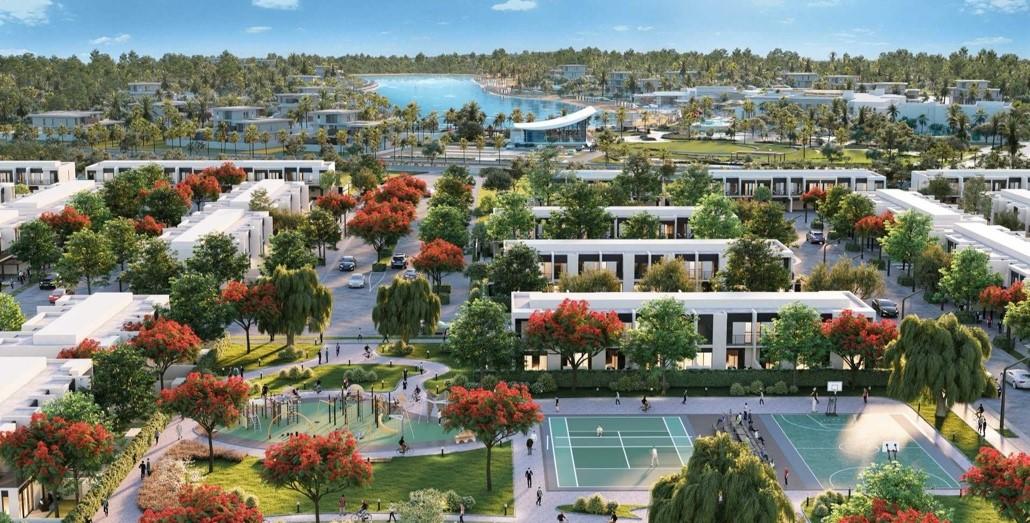Staying true to their commitment to sustainable design and living, Majid Al Futtaim has designed the project Tilal Al Ghaf with walkable neighborhoods connected by a network of pathways, cycling tracks and jogging trails – linking the community to retail, restaurants and schools.
The Tilal Al Ghaf Community in Dubai is developed with sustainability objectives at its forefront. Its basic design principles have been shaped around minimizing traffic congestion, reducing the amount of infrastructure required and promoting pedestrian neighborhood centers. The project addresses sustainability in a holistic way by equally considering economic, social, and environmental factors.
One of the primary targets of the project is to preserve vital ecological features and achieve no net loss of biodiversity, a target codified in the Ecology Framework strategy which was developed alongside the concept master plan. The aim from the outset was to maintain the existing valued ecological aspects, and enhance ecology where possible, through habitat creation.
A Construction Environmental Management Plan (CEMP) has been employed for all stages of construction to ensure that the impact on local biodiversity is minimized. A key feature of local biodiversity is the Ghaf tree, the national tree of the United Arab Emirates (UAE). This project will ensure that the existing Ghaf trees are protected throughout construction and into the community’s operational phase. Furthermore, an additional 1,000 Ghaf trees have been planted in the first phase of the project. An additional 4,000 Ghaf tree plantings are planned at prominent locations across the site.
The Community itself will have access to this local biodiversity through the 34,000 m2 of parks that the area will boast.
Majid Al Futtaim has also identified nature as a useful resource for infrastructure sustainability and resilience concerns. For example, the company has designed aquatic habitats in tandem with the storm-water management system. They will also plant vegetation on available flat surfaces, such as rooftops and street areas, to minimize flooding and reduce the absorption of solar radiation.

